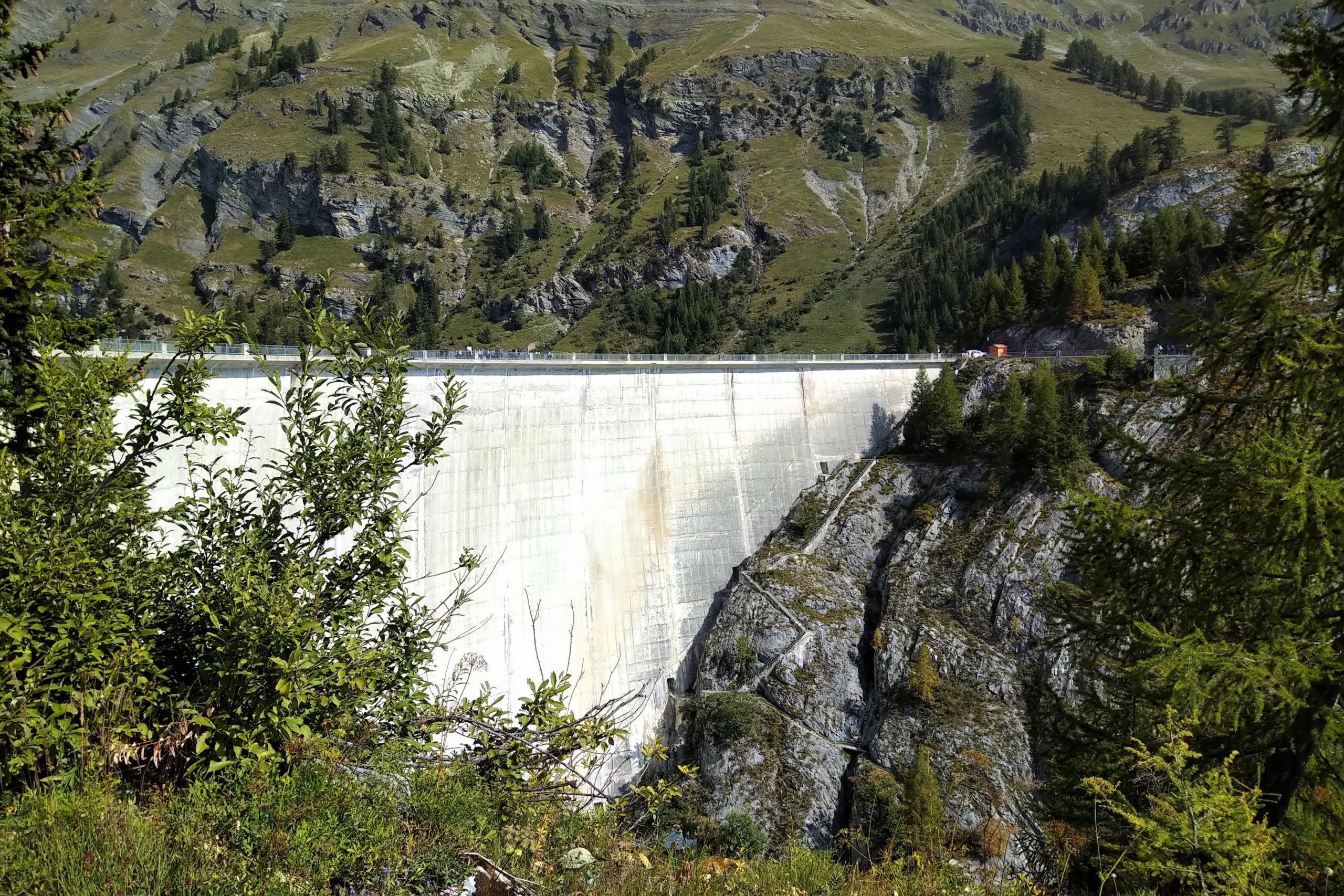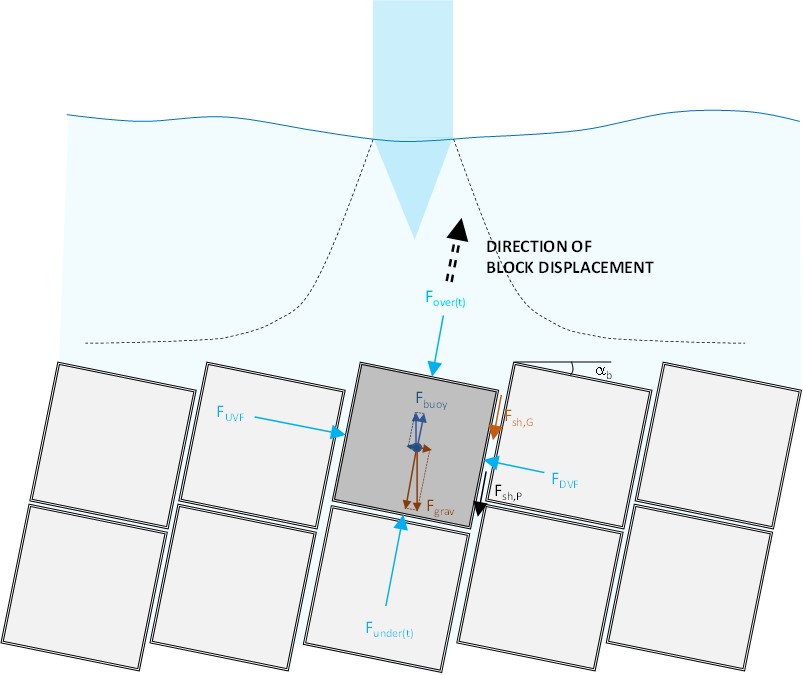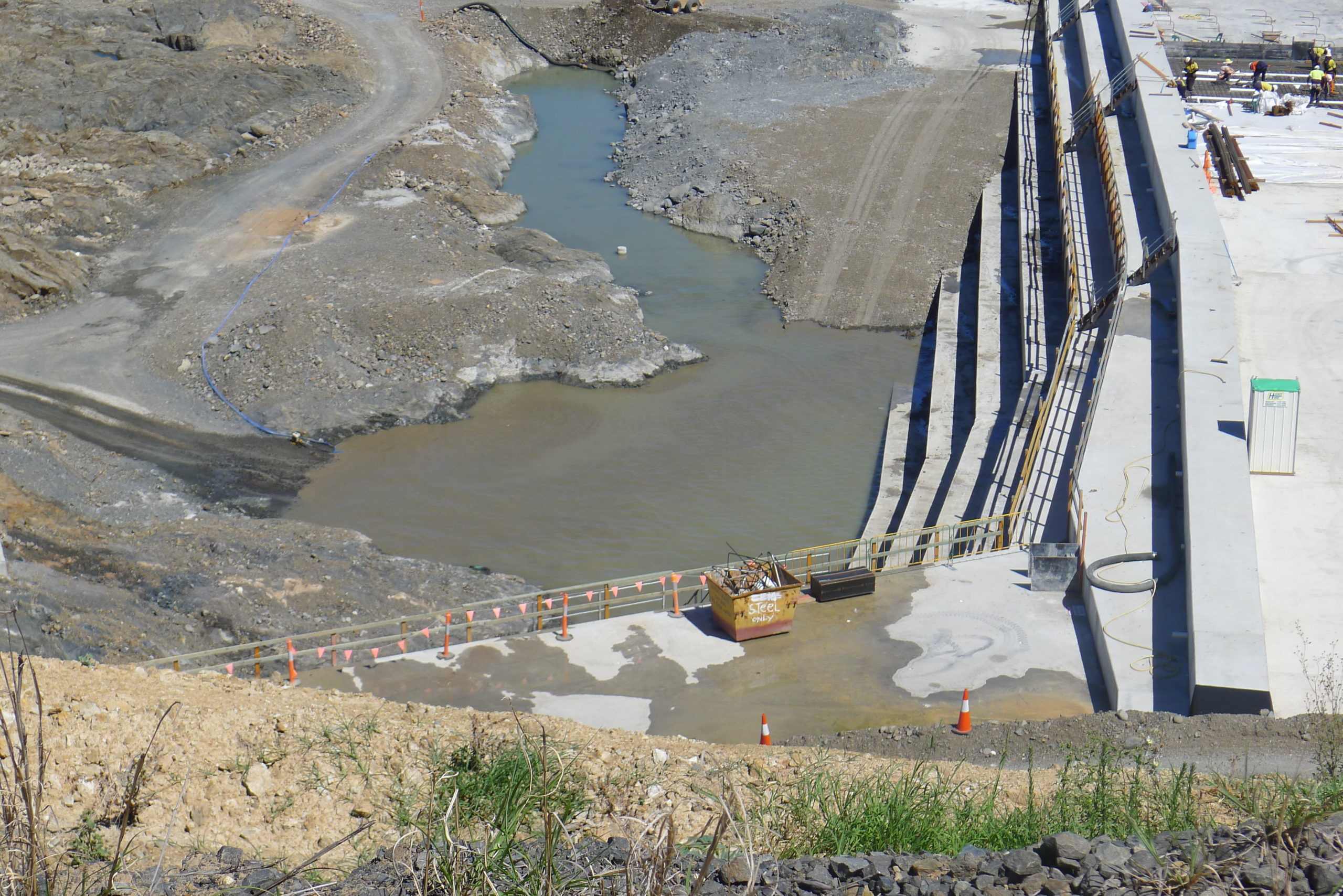
Background
The DI method developed by Bollaert in 2002 has shown its relevance for practice but nevertheless suffers from the following drawbacks that might restrict its applicability for different real-life flow situations:
- The method is based on CI values that have been recorded for circular compact jets that vertically impinge into a plunge pool
- The method deals with net uplift pressure pulses recorded on artificial 2D rock blocks, and not with fully 3D pressure pulses acting on rock blocks at the water-rock interface
Although proven very useful and efficient for most cases of turbulent jets, the first drawback signifies that the DI method cannot be used for other types of turbulent flow structures, such as high-velocity flows parallel to the rock interface.
The second drawback excludes any influence of spatial pressure distribution or related block side length on the net uplift pulses as they will occur on a real 3D rock block.
Hence, an enhanced version of the DI method has been developed and incorporated in the X_pl@re platform, called the MDI method (Bollaert, 2021). This novel method makes use of the RMS pressure fluctuations at the joint entrances of the rock blocks. Based on available literature data, amongst others the laboratory experiments on fully 3D blocks as described by Liu et al. (1998), Federspiel (2010), Federspiel and Bollaert (2013) and Pells (2016), a direct relationship between these RMS pressure fluctuations at the block surface and the related net uplift forces on the block has been established.
Features
The MDI method offers the following main features:
- use of dynamic pressure fluctuations as input, regardless of the type of turbulent flow environment
- user-definable time duration of net uplift pressure pulses
- use of a user-definable multiplication factor of dynamic pressure fluctuations
- automated determination of pressure fluctuations over the 2D computational domain
- automated determination of pressure fluctuations as a function of the type of jet (vertical, oblique, circular, rectangular, broken-up, etc.)
- integration of shear forces in lateral rock joints
- integration of rock block angle with the horizontal
- use of a user-definable scour threshold, i.e. critical block uplift height


Output
The following output is obtained by applying the MDI method:
- ultimate scour depth by rock block uplift in each computational gridpoint
- 2D scour hole depth and shape within the vertical plane of computation
